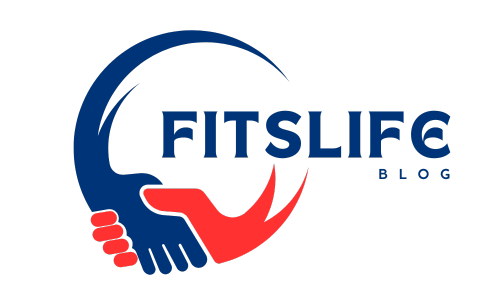Starting a fitness journey is key to better health and wellness. Regular exercise boosts our physical health and mental well-being. It leads to a more fulfilling life.
By adding fitness to our daily life, we gain many benefits. These include more energy, a better mood, and a stronger immune system. All these help us stay healthy overall.

On our fitness path, remember that it’s a personal and ongoing journey. Creating a fitness plan that fits our needs and goals is crucial. This plan should cover physical activity, nutrition, and mental health for a balanced lifestyle.
Key Takeaways
- Regular physical activity improves overall health and wellness
- Fitness is a personal and ongoing process
- A personalized fitness plan is essential for success
- Nutrition plays a crucial role in achieving fitness goals
- Mental well-being is a critical aspect of overall fitness
- A balanced lifestyle is key to maintaining long-term health and wellness
Understanding the Foundations of Fitness
Starting a fitness journey can feel daunting. Yet, knowing the basics of fitness is key to reaching your goals. A good workout plan should mix physical activity, mental health, and healthy eating. This way, you can create a routine that fits your life and keeps you motivated.
Setting realistic goals is crucial. First, check where you stand in fitness. Then, pinpoint what you need to work on. Having clear goals helps you stay on track, whether you’re new to fitness or have been at it for a while. Regular exercise and a healthy diet are vital for your overall well-being.
- Physical activity: Regular exercise boosts heart health and strengthens your body.
- Mental well-being: Try stress-reducing activities like meditation or yoga to improve your mental state and motivation.
- Nutritional advice: Eat a balanced diet to fuel your workout routine and support your health.
By grasping the basics of fitness and adding these elements to your life, you’re on the path to success. Stay motivated and focused. If needed, seek advice from fitness experts or nutritionists to guide you.
Creating Your Perfect Fitness Routine
To make a fitness routine that fits your lifestyle, think about your goals, likes, and schedule. A good routine can lead to wellness and better health. Consider what exercise you like, like cardio, strength training, or flexibility.
A balanced fitness routine should mix different activities to keep you interested and motivated. For instance, you might try:
- Cardio exercises like running, cycling, or swimming
- Strength training exercises like weightlifting or bodyweight exercises
- Flexibility exercises like yoga or Pilates
Don’t forget about nutrition and recovery. Eating well supports your fitness goals, and rest helps prevent injuries and boosts performance. Adding these to your routine makes it effective and fits your lifestyle.
Remember, a great fitness routine is about enjoying what you do and fitting it into your life. With some creativity and planning, you can craft a fitness plan that meets your goals and boosts your wellness.
Essential Components of Physical Fitness
A well-rounded fitness plan is key for overall wellness. There are four main parts to focus on: cardiovascular endurance, strength, flexibility, and balance. A balanced fitness approach improves health and lowers injury risk. Regular exercise boosts endurance and strength, making daily tasks easier.
The American Heart Association suggests at least 150 minutes of moderate aerobic activity weekly. This can be running, swimming, or cycling. It helps improve heart health. Adding strength training to your routine builds muscle and boosts strength.
- Improved cardiovascular endurance
- Increased strength and muscle mass
- Enhanced flexibility and mobility
- Better balance and coordination
Mixing cardio, strength training, and flexibility exercises in your routine boosts fitness. Start slow and gradually increase workout intensity and duration. This way, you’ll avoid injuries and see progress.
Nutrition Strategies for Optimal Performance
Nutrition is key in fitness, supporting workouts and health. A balanced diet gives the body fuel for top performance. Understanding wellness and its link to nutrition is crucial.
A healthy diet includes fruits, veggies, whole grains, lean proteins, and healthy fats. Drinking lots of water is also vital for health and wellness. Paying attention to when and how much you eat helps reach fitness goals.
Some important nutrition tips are:
- Eat a balanced diet with lots of whole foods.
- Drink plenty of water to stay hydrated.
- Be careful with meal timing and portion sizes.
- Listen to your body and adjust as needed.

By focusing on nutrition and making smart choices, you can boost your fitness and wellness. A healthy diet is part of a bigger health plan.
The Science Behind Effective Workouts
Understanding the science behind workouts is key to optimizing your routine. By using exercise physiology, you can make your workouts better. A good workout mixes cardio, strength training, and flexibility exercises for better fitness.
Workout science shows the importance of heart rate zones. Monitoring your heart rate helps you adjust your workout intensity. This can help improve your heart health or muscle strength. Rest and recovery are also crucial for your body to heal and get stronger.
- Progressive overload: slowly increase the intensity or weight to challenge your muscles and help them grow.
- Periodization: switch between intense workouts and rest to avoid getting stuck in a routine.
- Listen to your body: pay attention to signs of tiredness or injury and adjust your workout as needed.
By following these principles and staying up-to-date with workout science, you can create a fitness plan that meets your goals. This will improve your overall health and well-being.
Common Fitness Mistakes to Avoid
Starting or continuing a fitness journey can lead to common pitfalls. Overtraining is a big one, where people push too hard without rest. This can cause burnout, lower motivation, and increase injury risk.
Another mistake is poor form during exercises. This can strain muscles and joints, leading to injury. It’s key to focus on proper technique and form in every workout.
Setting unrealistic expectations is also common. When goals are too high, it leads to disappointment and frustration.
To avoid these mistakes, it’s important to:
- Start slowly and gradually increase intensity and duration
- Focus on proper form and technique
- Set realistic and achievable goals
- Listen to your body and rest when needed
Knowing these common fitness mistakes helps avoid them. Fitness is a journey, not a destination. It’s about progress, not perfection.

Making Time for Fitness in Your Daily Life
Finding time for fitness in today’s busy world can be tough. But, with a bit of creativity and planning, you can add physical activity to your daily routine. This can greatly improve your lifestyle. The key is to manage your time well to make fitness a regular part of your day.
First, look at your schedule and find times for fitness. You might walk during your lunch break or do jumping jacks during TV commercials. The idea is to make fitness as essential as brushing your teeth or showering.
Here are some tips to fit fitness into your day:
- Wake up 30 minutes earlier each day for a morning workout
- Use your lunch break for a walk or quick workout
- Do a few exercises during TV commercial breaks
Adding fitness to your daily lifestyle boosts your health and wellbeing. Remember, even small amounts of exercise can be beneficial. With a bit of creativity and planning, you can manage your time to focus on your fitness goals.
| Time of Day | Fitness Activity |
|---|---|
| Morning | 30-minute workout |
| Lunch Break | 30-minute walk |
| Evening | 30-minute yoga routine |
Building a Sustainable Fitness Lifestyle
Starting your fitness journey is exciting. The goal is to make it a lasting choice, not just a short-term goal. By creating healthy habits, finding your own motivation, and joining a supportive community, you can make fitness a lifelong commitment.
Building lasting habits is key. It takes about 66 days for a new behavior to become second nature. Start with small, achievable steps like a morning workout or a healthy lunch. These actions will grow into habits that boost your health over time.
Keeping motivated is essential for success. Think about what really gets you excited – maybe it’s better heart health, more strength, or just feeling more alive. Celebrate every small victory and be ready to change your goals as you get stronger.
Surround yourself with people who share your fitness goals. Being part of a local fitness group, having a workout buddy, or connecting online can give you the support and friendship you need. It helps you stay motivated and on track.
FAQ
What are the essential components of a comprehensive fitness routine?
A good fitness routine includes cardio, strength training, flexibility, and balance. These help improve your physical fitness and health.
How can I set realistic fitness goals?
Make your goals specific, measurable, achievable, relevant, and time-bound (SMART). This keeps you motivated and tracks your progress well.
What are the benefits of incorporating strength training into my fitness routine?
Strength training builds muscle, increases bone density, boosts metabolism, and enhances physical function and performance.
How can I ensure I’m fueling my body properly for optimal fitness?
Eat a balanced diet with carbs, proteins, and healthy fats. This gives your body the energy and nutrients it needs for fitness and health.
What are some effective strategies for making fitness a sustainable part of my lifestyle?
Develop healthy habits, find your own motivation, and surround yourself with support. These help make fitness a long-term choice, not just a goal.
How can I incorporate fitness into my busy daily routine?
Fit in workouts in the morning, use lunch breaks, and have a routine in the evening. This makes exercise fit into your busy life.
What are some common fitness mistakes I should avoid?
Avoid overtraining, poor form, unrealistic goals, and neglecting rest and recovery. These can slow progress and increase injury risk.
How can I use heart rate zones to optimize my workouts?
Know your heart rate zones and train in them. This makes your cardio workouts more effective and helps you reach your fitness goals faster.







